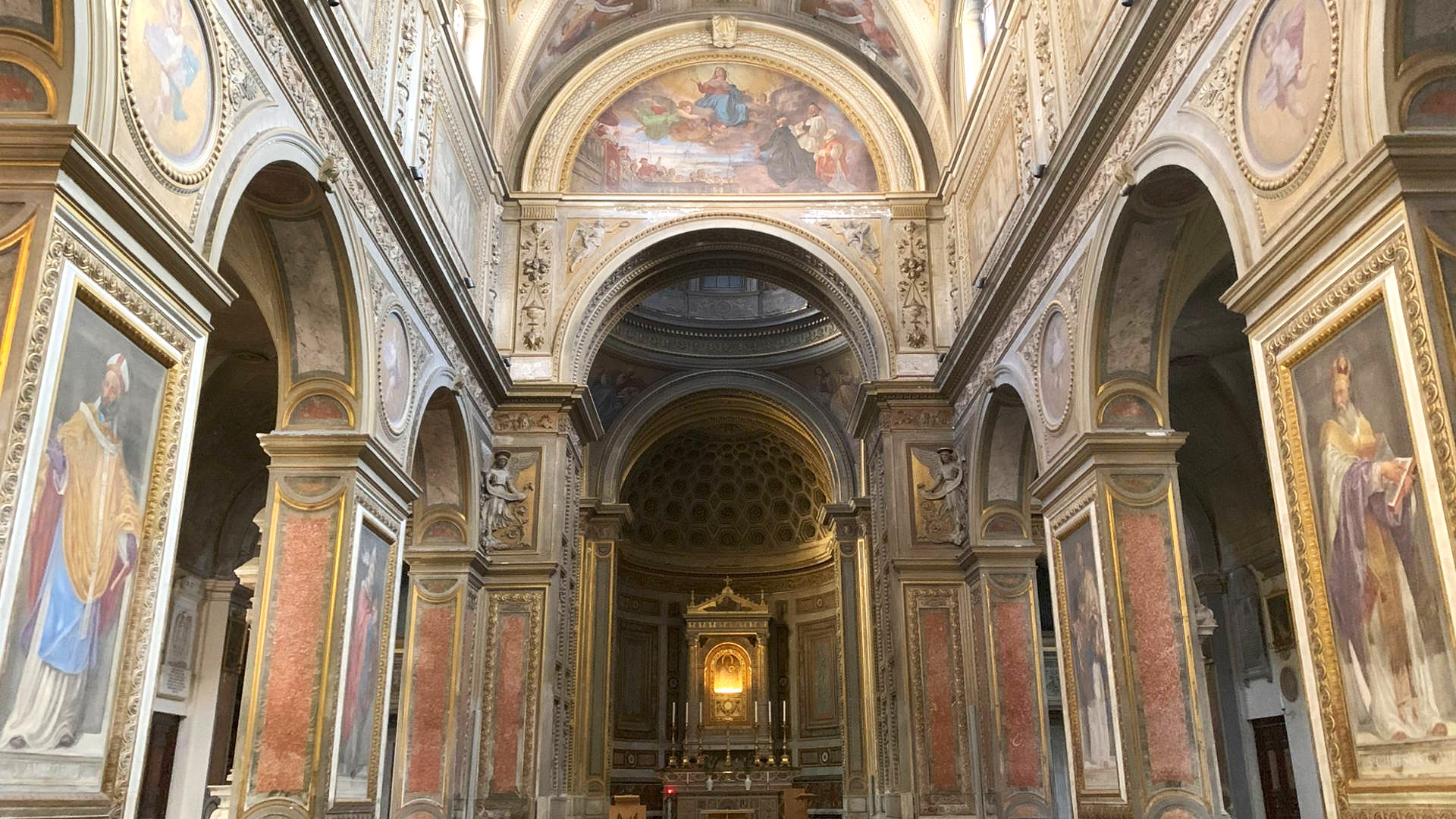
Located in Piazza Capranica, in the heart of the Rione Colonna, the Church of Santa Maria in Aquiro is very ancient, possibly dating back to the 5th century.
The title ‘Aquiro’ is of uncertain origin: according to the theory most widely accepted by historians, it originates from the probable alteration of ‘A Cyro’, the name of a historical figure related to the church, while other hypotheses refer to ‘Equirria’, an ancient Roman feast for the god Mars, or to ‘Aqua’, due to the nearby presence of a stretch of the Vergine Aqueduct.
Over time, it underwent numerous reconstructions and restorations: mentioned in the Liber Pontificalis of Pope Gregory III, it was enlarged in the 8th century at the behest of the same pontiff ‘in qua antea diaconia et parvum oratorium fuit’ (where previously there was a diaconia and a small oratory). In 1540, the church, also called ‘degli orfanelli' (of the little orphans), was entrusted to the Confraternity of the Orphans - approved by Pope Paul III with a motu proprio in the same year. The charity institution took care of the children who lost their families after the Sack of Rome.
At the end of the 16th century, Cardinal Antonio Maria Salviati commissioned the architect Francesco Capriani da Volterra to rebuild the church; the works, interrupted by the architect's death, were resumed in 1601 by Carlo Maderno and Filippo Breccioli, who also took care of the extension of the orphanage to create a wing for the new College, which would have guaranteed education for the most deserving orphans. The upper part of the facade of the sacred building, only partly completed by Maderno and Breccioli, was finished in 1744 by Pietro Camporese the Elder. Starting in the second half of the 19th century, under the pontificate of Pius IX, the church underwent impressive restoration works entrusted to Gaetano Morichini and, for the interior, to the painter Cesare Mariani.
The two-order façade, flanked by two bell towers with small domes, is characterised by three portals surmounted by tympanums - triangular for the central one and semi-circular for the two side ones - in the lower part. In the upper part, a large window is crowned by a triangular tympanum with two angels holding a coat of arms and, at the top, a cross in the centre of two flaming vases.
The three-nave interior, divided by eight pillars, has three chapels on each side and is richly decorated with stuccoes, paintings and frescoes. Among the works are paintings by the Roman School, Francesco Nappi, Carlo Saraceni, Maestro Jacopo, Anonimo Caravaggesco, Gherardo delle Notti (Gherard van Honthorst) and Giovan Battista Speranza. On the high altar is the splendid 14th-century Madonna and Child with St Stephen by the school of Cavallini, coming from the lost Church of Santo Stefano del Trullo, as the tombstones in the vestibule.
Photo Redazione Turismo Roma
Informationen
For the timetable of the masses and visiting conditions, please consult the contacts.
 Condividi
Condividi
Location
Um mehr über alle barrierefreien Dienste zu erfahren, besuchen Sie den Abschnitt barrierefreies Rom.











































